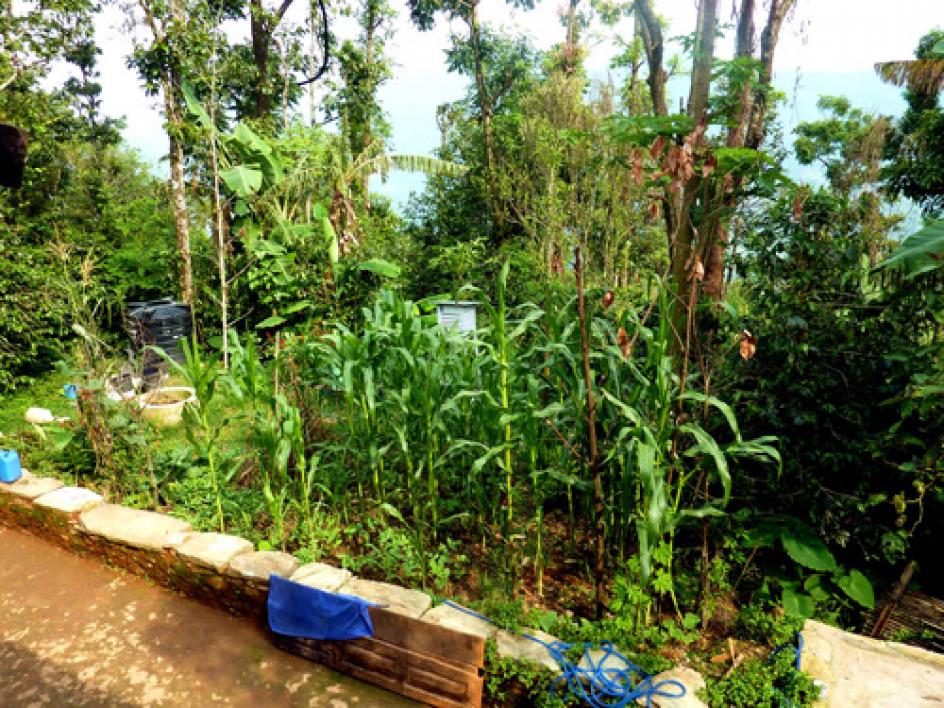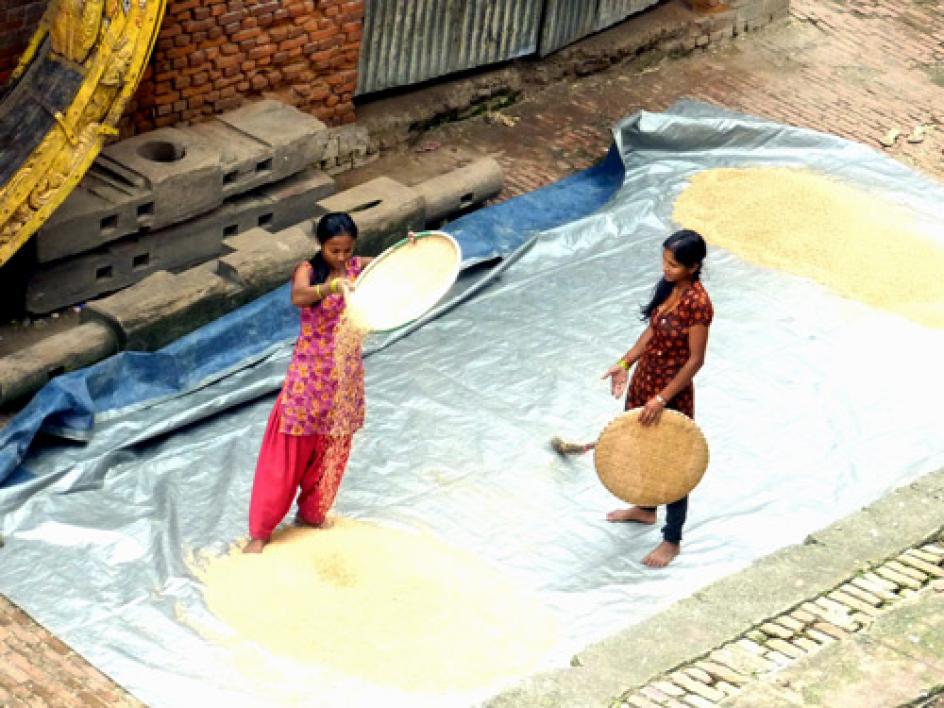Sustainability student chronicles travels in Nepal

Tayler Jenkins, a student in ASU’s School of Sustainability, surveyed rural farmers in the village of Begnas, Nepal to obtain data on their adaptive livelihoods during climate change.

Rupa Lake, where Jenkins studied the local community-run fishery and forestry cooperation for her honors thesis.

Jenkins (left) says the Rupa Lake Rehabilitation and Fishery Cooperative can be an ecologically, socially and economically sustainable natural resource management option.

“Without my education in sustainability, I don’t think I could come to the conclusion that in order to be fully sustainable, the co-op has to be economically, socially and environmentally sustainable,” Jenkins says.

Jenkins (right) carries dead leaves to the village’s compost pile with another volunteer.

Jenkins (right) interviewed more than 40 community members about their opinions on the cooperative’s organization and success for her honors thesis.

Jenkins’ interpreter Soni (right) helped her complete the in-person surveys in the Begnas village.

Jenkins (left) joins her host family and two other volunteers on the conservation farm she lived on for three months this past summer.

The conservation farm where Jenkins stayed and worked had a few buffalo and goats, as well as a diverse range of crops. The farm collects rainwater for irrigation, and buffalo excrement and old plants for composting to create gas that powers stoves.

A local woman shows Jenkins a plant that grows on her farm. After returning, Jenkins reflected on how gracious and welcoming the Nepalis were.

One major responsibility on the farm was to collect and carry grass for fodder for the farm’s animals.

Jenkins made friends with Vishnu, here carrying grass for fodder. Even though farming is hard work, Jenkins said there was plenty of time for resting, tea drinking and friendship in the village.

Excrement from water buffalo is composted in a biogas contraption and turned into gas to power stoves.

Jenkins helps herd goats in a neighboring village.

Surya, the owner of Jenkins’ host farm, shows off his crops.

A woman (left) sells offerings to be given to the gods on the colorful streets outside of Pashupati Temple, one of the most significant Hindu temples of Shiva in the world.

Layers of purple paper lay out to dry at a Nepali papermaking factory.

Vegetable stands line the streets of Bhaktapur, a historically rich medieval town in Nepal.

Red-bottomed monkeys carry their babies outside of Swayambhu Temple in Kathmandu Valley, Nepal.

Two Nepali women winnow rice, a technique used to remove the dry protective chaff from the grain. Rice is a common crop in Nepal, but due to climate change, farmers can no longer predict monsoons used to naturally irrigate the crop.

A young girl chases pigeons in Durbar Square in Kathmandu, the capital of Nepal.